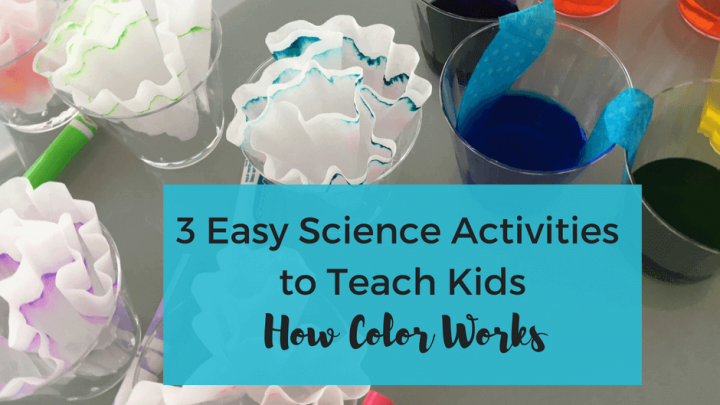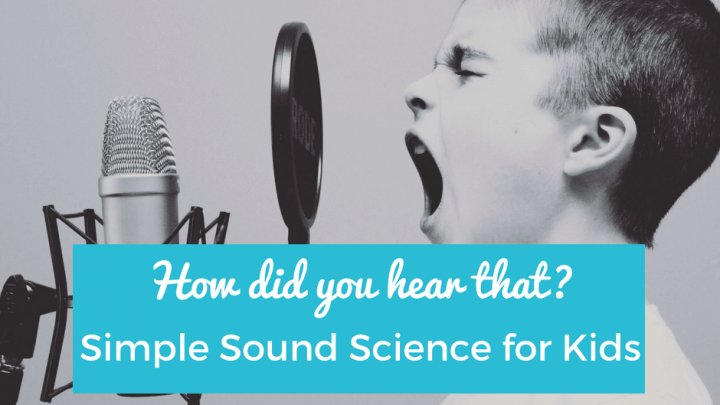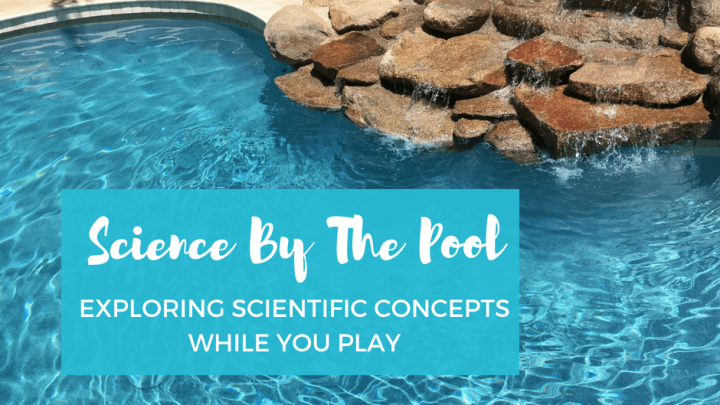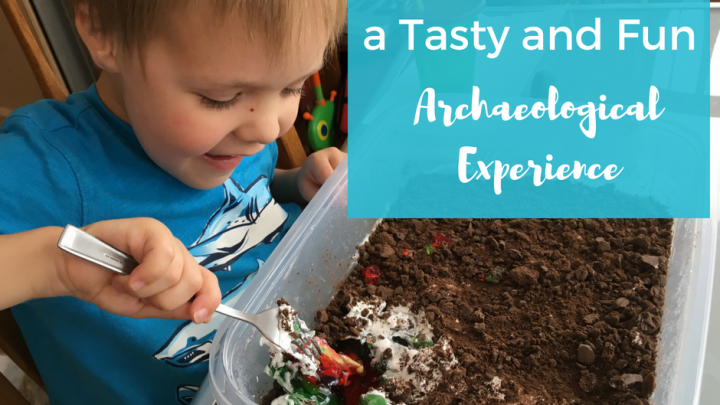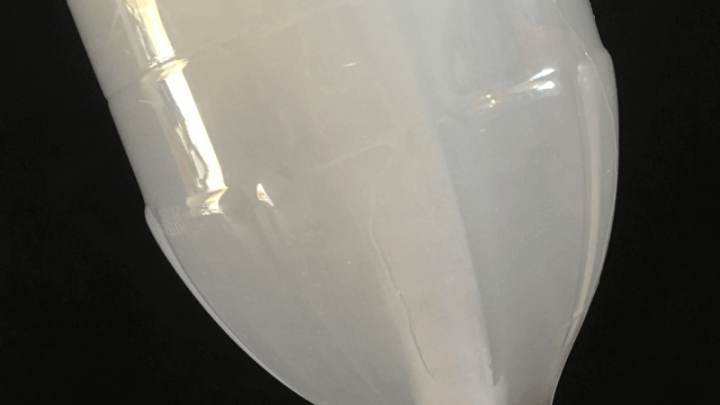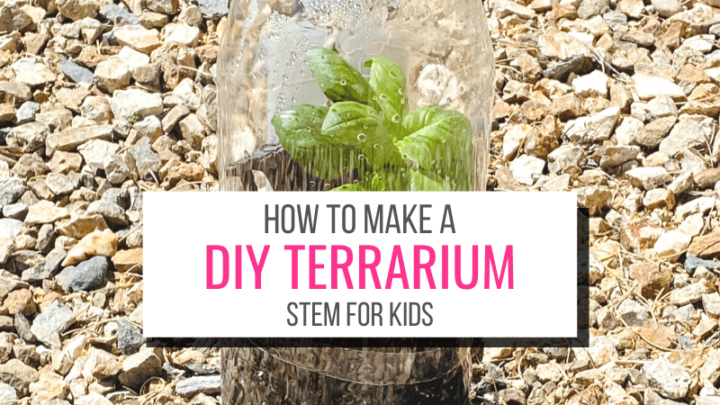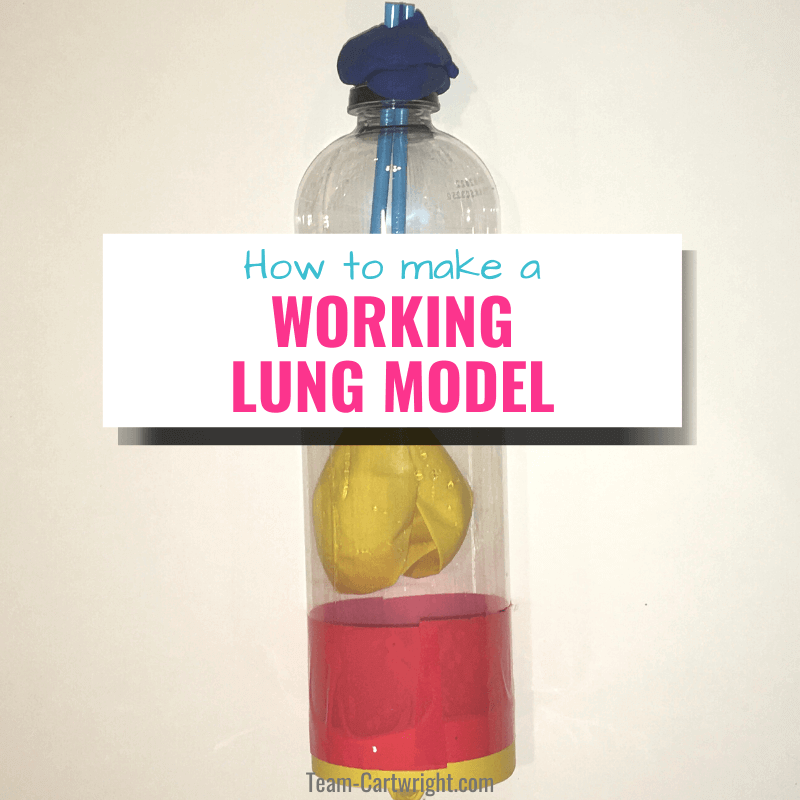Preschool STEM Activities
Preschoolers were made for STEM. They want to know how everything around them works and they want hands-on activities. Don’t worry, this doesn’t mean you need to do big complicated experiments. We can still keep it simple.
As your toddler grows into a preschooler they are able to understand bigger concepts. They are also able to think deeper into what is going on in their world and tell you what interests them most.
This is an amazingly fun time to do STEM activities with your kids.
Here is what STEM activities and science experiments should look like with preschoolers, plus a big list of activities your little scientist will love.

What's In This Post?
- Preschool STEM Activities
- Goals for Preschool STEM Activities
- Easy Preschool STEM Activities
- Preschool STEM Activities
- 3 Easy Science Activities to Teach Kids How Colors Work
- How Did You Hear That? Simple Sound Science for Kids
- Butterfly STEAM Activities for Preschoolers and Toddlers
- Sunscreen Painting: STEAM For Kids
- How To Make a DIY Stethoscope for Kids
- Number Treasure Hunt: Sensory Number Sense Activity
- Science by the Pool: Easy Summer STEM Activities
- Soap and Pepper Experiment: How soap works
- Moon Activities for Preschoolers
- Colored Flower Experiment: Spring Science for Kids
- Digestion Experiment for Kids- DIY Stomach Model
- Popsicle Stick Catapult: A DIY Craft Stick Launcher
- How To Create a Tasty and Fun Archaeological Experience
- How To Make Butter with Kids: The Science of Churning Butter
- Easy Weather Science Experiments for Preschoolers and Toddlers
- At Home Chemistry: Cleaning Pennies with Ketchup
- DIY Soda Bottle Terrarium For Kids!
- How To Make Superhero Straw Shooters
- Exploding Bag Experiment for Kids
- Leak Proof Bag Experiment
- Simple, Strange, and Fun Human Tricks to Mess with Your Kids
- How To Make Mystery Tinker Bags and Explore Creative STEM Fun
- Monster Sensory Bags for Toddlers: Easy and Fun Learning Activity
- The Science of Slime and the Best Homemade Recipes
- Warm-Blooded Vs Cold Blooded Animal Activity (with Color Changing Slime)
- DIY Confetti Poppers for Kids!
- How To Make an Easy Easter Egg Rocket
- Kids Can Code! Simple and Fun Lego Coding Activities
- Funicular Trains: Pulleys for Kids
- Easy Heart Pump Model: Cardiovascular STEM for Kids
- Working Lung Model for Kids
- How To Make a Model Spine: Anatomy STEM for Kids
- Science Experiments for Preschool
Preschool STEM Activities
I know, the thought of sitting down and doing a real science experiment with a preschooler can seem, well, like a bad idea. Can they sit still? Is it safe? What are they even learning?
Don’t worry, this is going to be fun. STEM with preschoolers is hands-on, exciting, and it does not require a lot of work or a big mess.
What Ages Do We Mean?
First up, what ages are we talking about here? For these preschool ages, we mean 3-year-olds and 4-year-olds. They aren’t young toddlers anymore, but they aren’t kindergarten-ready either.
You will see that many of the activities here can also be found in the toddler STEM activities section. That’s by design. Kids don’t flip switches as they get older that suddenly make certain activities bad for them. They are still good, you can just dive deeper.
These activities are also designed to be flexible in terms of age range. This is perfect if you have more than one child. I give suggestions on ways to simplify projects for younger kids and ways to kick up the challenges for older children.
These particular activities work well for 3-4-year-olds, so they are highly recommended for your preschooler.
What is STEM/STEAM?
What does STEM mean again? And how is it different than STEAM?
STEM is an acronym for Science, Technology, Engineering, and Math. STEAM is just STEM with Art added. Yes, art is important! Not only for the creative growth of children, but art is also valuable for boosting problem-solving and communication skills. These are key for STEM.
Let’s breakdown what sort of activities would fit into these categories.
Science
This is the more traditional fields when we think of science. Chemistry, biology, physics, etc.
For preschoolers, science is still really getting to know the basics of their world. They are still learning about things like sink or float and color mixing. But they are also learning about the weather around them, the different parts of plants, and what is in our solar system.
You are still building their science foundations, so we don’t need to make things complicated. Preschoolers easily tell us what they are interested in though, so this is a great time to dive deep into dinosaurs, stars, baking soda reactions, or whatever excites them.
This is a good time to explain concepts so children start to become familiar with the vocabulary, but we aren’t expecting mastery yet. Exposure, repetition, and fun are what count.
Technology
Depending on your comfort level, screen time can start to play a part in technology learning. It isn’t the whole thing though.
Technology for preschoolers builds early coding skills, which focuses on pattern recognition and understanding cause and effect. (For example, coding in ‘move forward one step’ results in a robot moving forward one step.)
You can practice all of these skills with screen-free activities, and you can start to bring in some games and activities that use screens. The choice of how to do this is yours, but keep those no-screen options to help build fine motor skills too!
Engineering
Just like technology, you don’t have to think too high level for engineering at the preschool age.
A goal of engineering at this age is to work on problem-solving. How can they create something to solve a situation or even just what can they make to match what is in their imagination. This means that the adults step back and let the child explore.
Creative freedom and the freedom to make mistakes are learning tools here. Your child is going to try something and fail. That’s good, there is a ton of learning in that experience! You as the adult can help model positive reactions to failure and model resiliency.
Math
Math isn’t everyone’s favorite, but it can be pretty fun at the preschool age. There is still a big focus on knowing numbers and building number sense. (Number sense is the understanding that numbers have unique values and those values can interact with each other. Learn more here: What Is Number Sense?)
This means we are still focusing on counting, number matching, and value matching. This is all easy to do just through normal play, or you can do more directed activities. As your child gets older you can move on to bigger numbers too!
There is also still a focus on comparing values and sizes. So talk about more vs less, bigger vs smaller, that sort of thing. This age is also a great time to start basic addition and subtraction concepts. We aren’t talking about anything huge, you can ease these ideas into play. For example, just start combing groups of toys and counting them out to show addition. Then talk through subtraction by taking them back away again.

Goals for Preschool STEM Activities
How do we get the most out of our time doing these STEM activities with preschoolers? What should caregivers be focused on?
Fun and Hands On Experiences
As with all activities you do with kids, the number one goal is fun. If they aren’t having fun (and if you aren’t having any fun), what’s the point? No one is learning and it is only going to end with negative associations towards STEM.
So the first thing to focus on is having fun.
The next most important thing is to let your kids get in there and have hands-on experiences. (Obviously, do this as safety allows.) Demonstrations can be a great tool, but try to let the kids take the lead in STEM activities for preschoolers.
Let them touch, smell, see, do, and just experience as much as you can.
Observations
Speaking of experiences, we are still heavily focused on observations during those experiences.
A big part of science and STEM activities is observing what is happening. This means helping your child pay attention to what is happening. Ask guiding questions such as What do you see? What do you smell? etc. If it is safe, have them smell and taste what they can too.
Observations are key to data gathering and understanding how our world works, and helping your child to focus on these things will be helpful for future learning and communication skills. (This is also why sensory play is so important. Learn more here: Sensory Play Learning.)
Asking Questions
This is an easy one for a lot of kids to do naturally, but encourage the asking of questions! What do they see? How do they think the activity works? Why do they think the results turned out that way?
The key here for the adult is to listen. Listen to what your child observes and thinks. No, they aren’t always going to be right. But it is important that they feel they can ask anything AND offer up their own explanations without ridicule.
There are no stupid questions. There are not stupid explanations. This is how we build the confidence to explore the unknown. (And yes, after you listen you can guide them to more accurate answers as needed.)

Introducing the Scientific Method
The scientific method is an organized way of running science experiments. This is important even for preschool children. We don’t always follow it exactly when we do casual at-home science experiments, but it is a good idea to help kids learn to use a logical approach to their experimenting.
The scientific method is about so much more than just logical STEM projects, it teaches real-world life lessons and skills. You can read more here about how the scientific method sets kids up for powerful problem solving: Life Lessons from the Scientific Method.
Repetition
Get ready to do activities with preschoolers more than once. Repetition is an important part of learning for kids.
It is very valuable to do the same experiment multiple times. The good news is that if you remember the first goal, fun, then even more learning will take place. Kids learn best through play.
The more we do these activities as adults, the easier they are to do. You’ll experience less stress about doing them and build your own scientific confidence.
Easy Preschool STEM Activities
Now that we know what our goals and expectations are, let’s dive into the activities. Which preschool STEM activity are you going to try first?
Preschool STEM Activities
Preschool children love hands-onlearning! These easy and fun STEM activities for preschoolers are fast to put together and packed with learning. The target age for these science experiments is 3 years old to 4 years old, but that doesn't mean they are limited to these ages. Younger and older children will enjoy them too!
3 Easy Science Activities to Teach Kids How Colors Work
Colors are a natural way to get a child's interest and introduce science concepts. These are 3 super easy STEM activities that wow kids and teach fun science basics.
How Did You Hear That? Simple Sound Science for Kids
Embrace the noise littles make and turn it into a science lesson! Get super simple sound science activities kids love, including seeing sound waves and making a balloon amplifier.
Butterfly STEAM Activities for Preschoolers and Toddlers
Butterfly and caterpillar STEAM activities are so much fun! Get crafts that help learn caterpillar life cycles and anatomy, learn about symmetry, and burst out of a DIY cocoon!
Sunscreen Painting: STEAM For Kids
Turn sunscreen into a magical art project! This fun STEAM experiment shows kids just how important sunscreen is and is a great creative activity.
How To Make a DIY Stethoscope for Kids
Hearing our heartbeat is an amazing way to introduce anatomy science to kids. And you can make an easy DIY stethoscope with recycled materials. Here is how.
Number Treasure Hunt: Sensory Number Sense Activity
What's better than a treasure hunt? Combine sensory play and number sense with a fun number treasure hunt.
Science by the Pool: Easy Summer STEM Activities
Get fun and easy science experiments you can do at the pool- no prep needed! Big pool or kiddie pool at home, this summer STEM is perfect anywhere.
Soap and Pepper Experiment: How soap works
Curious as to why soap is so important for hygiene? Try this simple experiment! A little pepper and water will clearly show how soap works to keep us healthy. Plus get the full scientific explanation!
Moon Activities for Preschoolers
Space inspires kids from a young age, and there are so many fun ways to learn more about it from here on Earth. Get fun and easy moon activities including tidal locking and a tasty moon phase activity. (Plus a free printable!)
Colored Flower Experiment: Spring Science for Kids
Turn white flowers bright colors! It's easier than you think in this fun capillary action science experiment.
Digestion Experiment for Kids- DIY Stomach Model
How do our stomachs turn food into fuel for our bodies? This simple experiment shows kids how our stomach muscles and juices work together to break down the food we eat.
Popsicle Stick Catapult: A DIY Craft Stick Launcher
Turn craft sticks into a fun catapult! This is an easy engineering challenge that teaches about potential and kinetic energy.
How To Create a Tasty and Fun Archaeological Experience
Let your child be an archaeologist with a fun and tasty dinosaur dig! This is a fun sensory STEM experience your kids will adore.
How To Make Butter with Kids: The Science of Churning Butter
Learn about states of matter and how they change while making butter! This is a great science experiment for getting energy out, and it is very good at showing clear changes kids can understand. And you end up with butter you can actually eat!
Easy Weather Science Experiments for Preschoolers and Toddlers
5 Fun and easy weather experiments your kids will adore! Make a tornado in a bottle, see rain fall through sensory clouds, make a water cycle bag, and more. All using at-home items, all fascinating for preschoolers!
At Home Chemistry: Cleaning Pennies with Ketchup
Can you clean a penny with ketchup? This simple kitchen chemistry challenge will thrill your child and teach them about chemical reactions.
DIY Soda Bottle Terrarium For Kids!
Make your own personal garden and learn how plants grow anywhere! This terrarium from recycled materials is a great way to learn about nature and botany basics.
How To Make Superhero Straw Shooters
Every child should see themselves as a superhero, and this STEAM craft makes it happen. Turn your child into a real flying hero with straw shooters!
Exploding Bag Experiment for Kids
Turn a simple lunch bag into a fun popping experiment with a super simple chemical reaction! At home items are all you need to learn about limiting reagents and have fun.
Leak Proof Bag Experiment
Did you know you could put a pencil through a bag of water without the water coming out? Learn how with the leak proof bag experiment!
Simple, Strange, and Fun Human Tricks to Mess with Your Kids
Dare your child to stand up against a wall on one foot. Can they do it? Get fun and easy (and totally safe) ways to fool your body while your child learns about proprioception!
How To Make Mystery Tinker Bags and Explore Creative STEM Fun
Make a mystery engineering challenge with tinker bags! Work creative problem-solving skills in a super fun and easy way!
Monster Sensory Bags for Toddlers: Easy and Fun Learning Activity
Sensory bags are an amazing way to get the benefits of sensory play with none of the mess. Learn how to turn the fastest sensory bag into an amazing number sense activity with these monster sensory bags!
The Science of Slime and the Best Homemade Recipes
Kids love slime. But what is slime exactly? Is it a solid? A liquid? Get the answers and the science behind how slime comes together. Plus get the easiest recipe to make consistently good slime, plus more recipes for the coolest slimes ever.
Warm-Blooded Vs Cold Blooded Animal Activity (with Color Changing Slime)
Let's learn about animals! Learn all about warm-blooded and cold-blooded animals with easy-to-understand explanations and fun facts. Plus learn how to use color-changing slime to help kids get a hands-on experience they will love! (And trust me, anyone can make this slime.)
DIY Confetti Poppers for Kids!
Turn any day into a party with easy DIY confetti poppers! Your child will learn about cause and effect with this fun STEAM craft. (And there are tips to limit the mess!)
How To Make an Easy Easter Egg Rocket
Want a real STEM challenge? Try making an Easter egg rocket! This is a real science experiment, you will need to experiment and tweak. But when it works, it's amazing.
Kids Can Code! Simple and Fun Lego Coding Activities
Screen-free coding! Yes, preschoolers can start learning coding basics of pattern recognition and they can build their own codes using legos! And you'll get free printables to help out.
Funicular Trains: Pulleys for Kids
Time for a physics challenge, making a funicular train! Share the importance of simple machines with this easy pulley system that uses straws and strings.
Easy Heart Pump Model: Cardiovascular STEM for Kids
Learn how the heart works by making a pumping heart model! This is a great project for kids and adults to do together and enjoy a homemade science fair project.
Working Lung Model for Kids
How do our lungs work? This homemade lung model from recycled materials lets kids see how our lungs and diaphragm work to make breathing possible.
How To Make a Model Spine: Anatomy STEM for Kids
Our spine is so important, but how does it keep us upright while still being flexible enough to bend and twist? Make this egg carton spine model and get an awesome visual representation of how the spine works.
Science Experiments for Preschool
Which preschool STEM activity are you going to try first?



